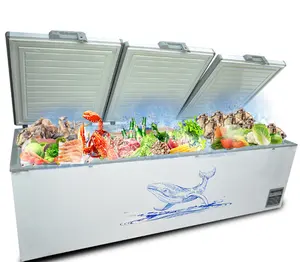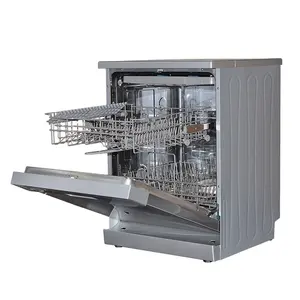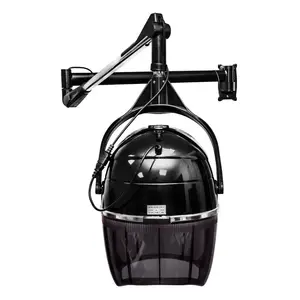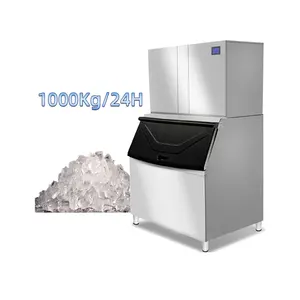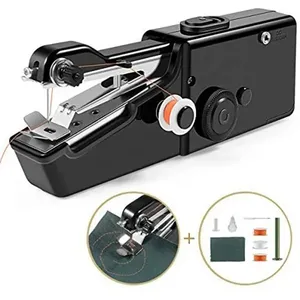Popular in your industry









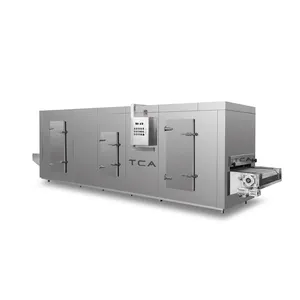













































 Ready to Ship
Ready to Ship

















Top categories
About food defrosting machine
Gone are the days when defrosting food was a time-consuming and often unpredictable process. The latest innovations in food defrosting technology have transformed the way we bring frozen foods back to their freshest state. From the early days of quick freezing in the 1920s to the advanced thawing equipment available today, the journey of defrosting technology has been marked by remarkable milestones. This article delves into the evolution of these technologies, the current state-of-the-art equipment found on platforms like Alibaba.com, and the various types of defrosting methods now at our disposal. We will explore how these innovations not only save time but also enhance the quality and safety of our food, reflecting the industry's commitment to efficiency and consumer satisfaction.
The Evolution of Food Defrosting Technology
The inception of quick freezing technology dates back to the late 1920s, marking a pivotal moment in food preservation history. This innovation was spurred by the observation that fish frozen in the Arctic's harsh conditions retained their freshness upon thawing. The commercialization of frozen foods began in the 1930s, but consumer acceptance was gradual. The industry saw a significant shift during World War II when the scarcity of tinplate for canning nudged frozen foods into a more prominent position in the market. Post-war, the re-introduction of frozen orange juice concentrate helped alter public perception, positioning frozen foods as a convenient choice rather than a mere substitute.
The 1950s and 1960s witnessed a surge in the variety of frozen products, including the introduction of TV dinners, which revolutionized the concept of prepared meals. Technological advancements such as the microwave oven further facilitated the consumption of frozen foods. By the 1970s, innovations like boil-in-bag vegetables and microwave-specific products began to appear, reflecting the industry's adaptation to changing consumer lifestyles. The 1980s and 1990s continued this trend with an array of new products designed for convenience, such as low-calorie meals and meal starters, underscoring the evolution of food defrosting technology from a novel invention to an integral part of modern food consumption.
Current Innovations in Thawing Equipment on Alibaba.com
The marketplace on Alibaba.com showcases a variety of innovative thawing equipment designed to cater to the diverse needs of the food industry. Among the offerings, machines capable of efficiently defrosting meat and fish stand out, incorporating advanced technology to expedite the process. Similarly, machines that utilize microwave energy for rapid and uniform thawing represent a leap in defrosting technology.
For businesses requiring precision cutting post-thaw, integrated solutions that not only defrost but also dice and slice with high efficiency are available. These machines are capable of handling various types of meat, ensuring a seamless transition from frozen blocks to ready-to-cook ingredients. Robust equipment designed for larger scale operations, offering defrosting capabilities that maintain the integrity and quality of the meat, is also available for sale.
Commercial entities can also find specialized equipment that combines thawing with packaging solutions, and machines with added control over the thawing process. These advancements reflect the industry's move towards more versatile and efficient thawing solutions that can adapt to various operational scales and product types.
Types of Defrosting Technologies Available
In the realm of food processing, defrosting is a critical step to preserve the taste, aesthetics, and safety of frozen products. The industry has seen the introduction of tumblers as an effective method for defrosting. These tumblers are designed to optimize heat transfer and maintain the integrity of the food products during the thawing process.
The technology behind these tumblers involves a double jacket design which allows precise control over the amount of steam introduced to the product. This method not only aids in retaining the product's moisture and proteins by potentially absorbing the steam but also contributes to a reduction in effluents and their organic load.
Defrosting tumblers come in various configurations and utilize steam-vacuum or cold convection methods. These innovations in defrosting technology offer significant advantages, such as increased defrosting speed, precision, cost-effectiveness, and enhanced safety measures.
Key Features and Specifications
Defrosting technology has evolved to include features that enhance the thawing process while maintaining the integrity of the food products. Modern defrosters are equipped with microprocessor control systems that regulate temperature, air circulation, and humidity. This ensures a uniform defrosting process, minimizing temperature gradients within the food, which can lead to spoilage. The defrosting process is designed to reduce microbiological contamination, making it a safer option for food handling. Additionally, the use of high humidity in the chambers helps to preserve the product's natural qualities during defrosting.
The design of defrosting chambers is often similar to that of ripening chambers, suggesting a controlled environment where the process can be precisely managed according to specific programs. These programs are tailored to the type of food being defrosted, whether it's meat, fish, or poultry, and are adjusted for optimal air flow and humidity levels. The chambers are constructed with materials suitable for the food industry, ensuring durability, hygiene, and thermal efficiency.
Innovative defrosting solutions use airborne defrosting methods in wind tunnels, which allow for rapid thawing. This method not only accelerates the defrosting process but also ensures minimal loss of the product's natural juices and quality. The equipment is designed for both packaged and unpackaged products, providing versatility for different industry needs. The defrosting trays and containers are capable of handling capacities ranging from small-scale to industrial loads, accommodating up to 18 tons, depending on the model.
Material Considerations in Defrosting Equipment
When considering the materials used in defrosting equipment, it's essential to focus on durability, hygiene, and thermal efficiency. The construction of defrosting chambers often involves innovative materials tailored for the food industry. For instance, the use of ST sandwich elements, which comprise extruded polystyrene with a closed cellular structure and a surface of reinforced plastic, is notable. These materials are vacuum-bonded to ensure high strength, allowing equipment to be mounted directly to the ceiling without additional supports. This design choice not only contributes to the equipment's longevity but also its hygienic properties, as the absence of internal cavities prevents moisture accumulation and bacterial growth. Moreover, the external condensation of moisture guarantees the preservation of the material's thermal conductivity, ensuring efficient defrosting processes. Such material considerations are crucial in defrosting technology, as they directly impact the quality of the thawing process, maintenance of the equipment, and the overall safety and quality of the food products being defrosted.
Advantages of Using Advanced Defrosting Solutions
Adaptive defrosting technology marks a significant leap forward in the realm of refrigeration, offering a suite of benefits that align with both environmental sustainability and economic savings. This intelligent system deploys sensors and algorithms to precisely identify the need for defrosting, initiating the process only when frost accumulation reaches a specific threshold. This targeted approach avoids the superfluous energy expenditure typical of conventional defrosting methods that operate on a fixed schedule, regardless of actual need.
The technology's ability to adapt to individual usage patterns—taking into account the frequency of door openings and the ambient humidity levels—results in a tailored defrosting cycle that conserves energy and reduces operational costs. By minimizing unnecessary defrost cycles, adaptive defrosting also mitigates the risk of freezer burn on stored food items, thereby curtailing food waste. This synergy of optimized energy use and enhanced food preservation is what positions adaptive defrosting as a superior choice for those seeking advanced defrosting solutions.
Applications Across Various Industries
Microwave tempering and defrosting technologies are integral in the food processing industry, impacting various sectors. These systems are particularly beneficial for meat processing, where they facilitate the efficient slicing, dicing, grinding, and forming of products. The precision of microwave tempering allows for rapid temperature increases, which is essential for preparing meats for further processing. This technology ensures a more uniform product condition, which is crucial for consistent quality in subsequent processing phases. The adaptability of microwave tempering systems means they can be tailored to different industry requirements, enhancing production flow and reducing the time products remain idle. This versatility extends to seafood processing, where tempering systems can replace traditional water thawing methods, addressing regulatory concerns about water use and waste. By improving downstream processing and offering a more controlled defrosting method, microwave tempering systems present a significant advancement in food technology, applicable across a range of food industries.
How to Choose the Right Defrosting Technology for Your Business
When selecting the appropriate defrosting technology for your business, consider the efficiency and cycle duration of the system. Electric defrost systems, which utilize electrical heating elements to melt ice, may consume more energy and increase humidity, potentially leading to bacterial and fungal growth. This method also requires careful timing of defrost cycles to be effective. On the other hand, hot gas defrost methods use existing hot vapor, which is more energy-efficient and produces less moisture, reducing the risk of microbial growth. The hot gas method also boasts a shorter cycle duration, minimizing temperature variations and allowing for quicker resumption of normal operations. Businesses should weigh these factors, alongside the specific needs of their refrigeration systems, to determine the most suitable defrosting solution.
Conclusion
The landscape of food defrosting technology has undergone a significant transformation, evolving from simple beginnings to a sophisticated array of solutions that cater to diverse industry needs. The journey from the inception of quick freezing to the latest equipment available on Alibaba.com illustrates a relentless pursuit of innovation. With the advent of tumblers, microprocessor-controlled defrosters, and adaptive defrosting systems, the industry has seen a leap in efficiency, safety, and quality preservation. These advancements offer substantial benefits, including energy savings, reduced food waste, and improved product integrity. As businesses consider integrating these technologies, the choice hinges on a balance between operational efficiency and the specific demands of their refrigeration systems. The right defrosting technology can significantly impact the bottom line and environmental footprint of food-related industries. In conclusion, the current innovations in defrosting technology are not just about thawing food; they represent a commitment to excellence in the food processing chain, ensuring that quality and freshness are maintained from frozen to fresh.
